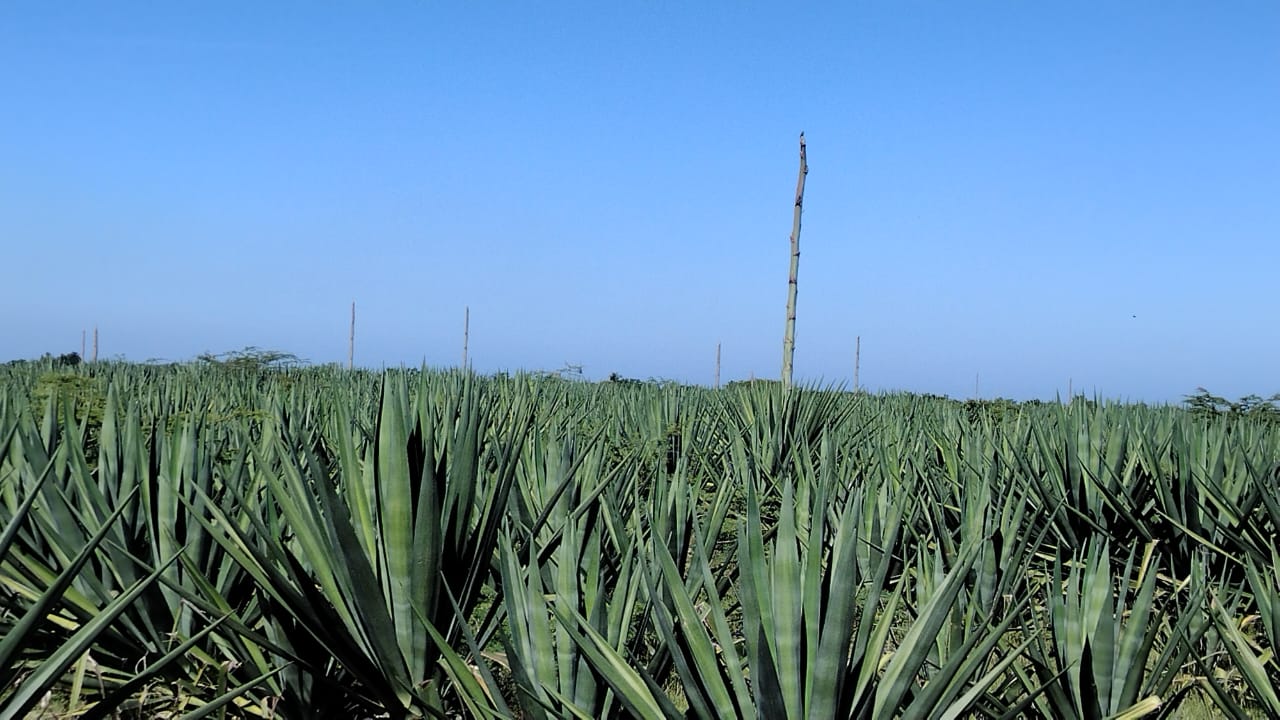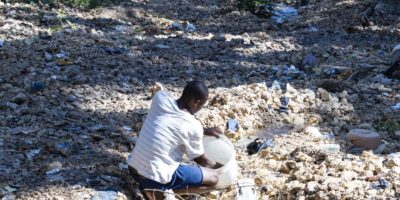A company in the Northeast produces sisal on 100 hectares and exports sixteen tons to El Salvador every two months
Haiti was the leading exporter of sisal in 1952.
Established in Fort-Liberté, in the North-East, in 1927, the Dauphin plantation ensured the production of 35,000 tonnes of this organic fiber.
The advent of synthetic fibers in the 1950s, the fall in prices on the international market and, later, political crises, led to a drop in production.
In 1951, sisal accounted for 24.4% of the value of Haitian exports, while in 1953, it only amounted to 8.9%.
Dauphin permanently closed its factories and left the country in 1986.
But the global interest in organic fiber in recent years, considered more environmentally friendly, offers an opportunity for Haiti, according to agronomist Edson Pierre.
Pierre heads the North Coast Development Corporation.
Based in Terrier-Rouge, in the North-East, this company has been producing sisal since 2013.
“With significant investments, this is a sector that can be very beneficial for the country’s economy,” Pierre explains to AyiboPost.

Sisal plantation belonging to the North Coast company, in Terrier-Rouge.
The company grows sisal on 100 hectares, exporting 16 tons to El Salvador every two months.
Agave sisalana, commonly called sisal or (pit in Haitian Kreyòl), is a plant cultivated for the fibers extracted from its leaves.
This fiber, highly appreciated in the crafts and textile industry for its strength, is used to make hats, ropes, bags and packaging, trivets and agricultural twine.
North Coast is interested in agro-industry and other employment-generating sectors.
The company rents land to local farmers for a period of 10 years.
The sisal produced by the farmers is purchased as part of a pilot project initiated in 2016 by the Ministry of Agriculture, Natural Resources and Rural Development (MARNDR).
Around 30 of the company’s employees manage the production and processing of the product.

The sisal is shelled before being washed.
Besides the North-East, sisal is also produced in the South and in the Artibonite.
In the rest of the world, Tanzania, Brazil, Madagascar, China and Kenya are the main producing countries of this fiber, according to 2018 statistics.
In 2022, global production of raw sisal and its derivatives amounted to 59,000 tons.
With significant investments, this is a sector that can be very beneficial for the country’s economy.
– Edson Pierre
In addition to its use in the textile industry for its fibers, sisal has a multitude of other valuable applications, according to agronomist Pierre.
Organic waste from the plant leaf is used in the production of biogas, organic fertilizers, and insecticides.
“This is precisely where we want to go, to exploit all of the opportunities offered by this plant,” declares Pierre.
Read also: Sugarcane cultivation explodes in Saint-Michel-de-l’Attalaye
In their resurgence, small industry is encountering difficulties.
According to agronomist Pierre, North Coast lacks equipment.
The workforce is leaving. It remains difficult to find fuel, which increases the cost of production.
In 2016, a company called Sisalco, based in the Caracol industrial park, attempted to revive production in the Northeast with funding from the United States Agency for International Development (USAID).
Equipped with equipment for processing sisal, the Sisalco company was North Coast’s main customer.
Sisalco began scaling back its operations in 2020, leading to their permanent cessation in 2021, resulting in a « strategic realignment of North Coast operations, » explains Pierre.

Sisal is placed in a container before being exported to El Salvador.
Ellies Etienne has been working with North Coast since 2012.
Around 50 other growers like this 59-year-old man produce sisal on 57 hectares, sold at US$0.50 per kilogram to North Coast.
“The money generated by the sale of sisal allows me to take care of my family,” Etienne confides to AyiboPost.
Aside from sisal, farmers like Guylaine Mondésir and her husband also cultivate other subsistence crops such as okra, peanuts, and squash on the same land.
Thanks to this production, the couple meets their food needs and pays for their children’s schooling.
At the local level, although very limited, sisal is used to make ropes and halters for restraining and tying up animals.
Aware of the importance of natural fibers used as a renewable raw material, the United Nations dedicated the year 2009 to them.
« The sisal industry holds great promise. We are making sure that Haiti benefits from it, » concludes Edson Pierre to AyiboPost.
Cover image: A farmer works on his sisal plant in Haiti. Photo: | © Concern Worldwide.
Keep in touch with AyiboPost via:
► Our channel Telegram : Click here
► Our Channel WhatsApp : Click here
► Our Community WhatsApp : Click here







Comments